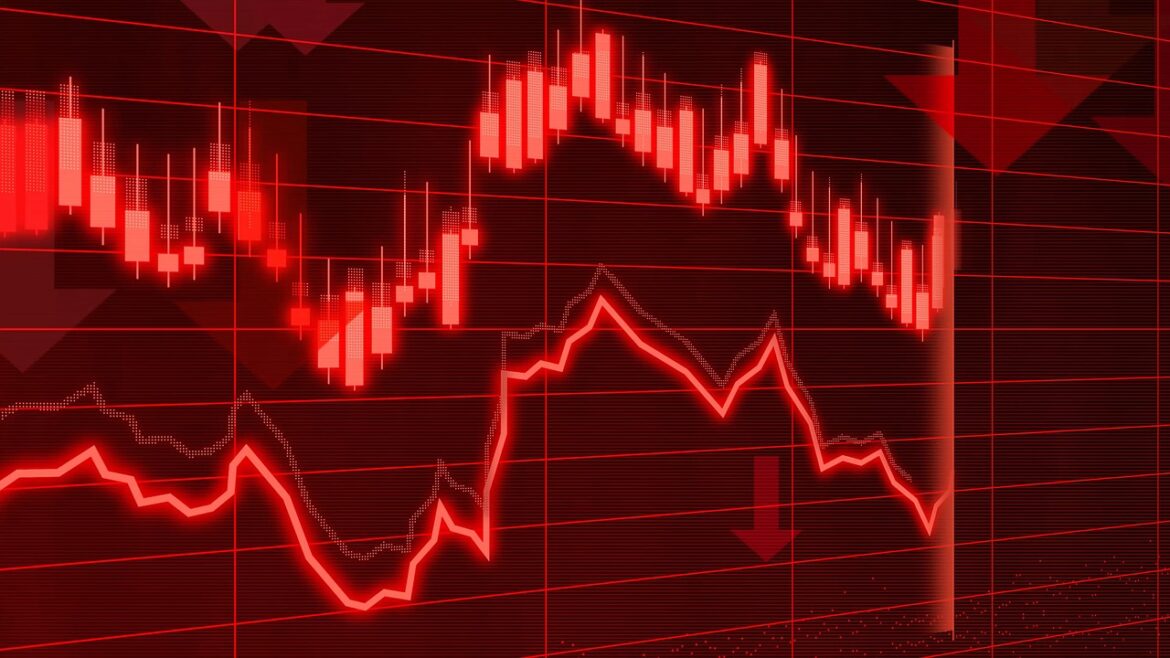Gold has all the potential to go unprecedentedly high. But silver will be gold on
Site:
Precious metals news
 Pending Home Sales Drop to a Record Low, Worse Than During the 2008 Great Financial Crisis
Pending Home Sales Drop to a Record Low, Worse Than During the 2008 Great Financial CrisisDec 1, 2023 - 07:38:26 PST
In October, U.S. pending home sales plunged 1.5%, reaching their lowest level since 2001, surpassing the downturn observed during the Great Financial Crisis. This significant drop, which marked an 8.5% decline from the previous year, reflects an acute crisis in the housing market. High mortgage rates, which momentarily exceeded 8%, combined with a severe shortage of available homes, have drastically suppressed housing demand. The situation is particularly dire in the West, where the decline in home sales has been most severe, indicating a market contraction worse than what was experienced during the Great Financial Crisis.
November's U.S. manufacturing PMI data indicates a downturn, signaling economic stagnation. The S&P Global Manufacturing PMI fell to 49.4, showing a contraction driven by reduced new orders and employment. The ISM Manufacturing PMI remained unchanged at 46.7, missing expectations and reflecting broad sectoral weakness. This slowdown, marked by a significant drop in factory employment not seen since 2009, raises concerns about reduced consumer spending and weaker wage growth. The data points to a stagnating economy with reduced manufacturing activity and potential GDP contraction, underlining the risks of stagflation.
Dec 1, 2023 - 05:47:31 PST
Javier Milei's election as the world's first anarcho-capitalist president is historically significant. It's unprecedented for someone elected to run a state to aim at abolishing it, proposing minimal government involvement. His victory, especially among young and poor supporters, could signal a trend towards greater individual freedom. Milei understands the government's negative role in the economy and money. He proposes sound money policies and free-market principles, aiming for Argentina to become an investment magnet. His foreign policy should focus on neutrality, being friendly to all but allied to none. If Milei's reforms succeed, Argentina could become one of the most prosperous countries, attracting capital and educated immigrants seeking freedom.
The Euro-zone faces a persistent risk of a "sovereign doom loop," where banking sector troubles could severely impact sovereign states. Despite attempts to disconnect banks from state finances, S&P Global Ratings warns of heightened risks in 2024 due to recession concerns and uncertain fiscal policies. This situation, similar to the UK's 2022 financial crisis, could lead to significant market confidence loss. Banks, heavily invested in government bonds, may further increase their holdings, deepening the interlinkage and risk. The region could face further destabilization due to potential austerity measures and tight monetary policies.
The persistence of high bank reserves in the US despite the Federal Reserve's balance sheet reduction hints at underlying financial strains. Banks are hoarding cash, incurring higher costs to maintain liquidity due to substantial unrealized losses on bond portfolios. This cautious approach is fueled by recent bank failures and regulatory shifts, fostering a climate of financial insecurity. The situation raises concerns about the Federal Reserve's quantitative tightening policy and suggests potential early termination of this strategy if financial stress intensifies. The declining use of the Fed's reverse repo facility further underscores these mounting pressures in the banking sector.
 Fed's Barr Suggests Banks Should Rely on Discount Window for Liquidity Solutions
Fed's Barr Suggests Banks Should Rely on Discount Window for Liquidity SolutionsDec 1, 2023 - 05:18:59 PST
Michael Barr, the Fed's Vice Chair for Supervision, highlighted the discount window as essential for financial stability and monetary policy. Speaking at an ECB event, he urged banks to use this funding source regularly, not just in crises. His comments follow recent U.S. bank failures and a report recommending Federal Home Loan Banks to guide lenders to the Fed in severe stress. Barr reassured that using the discount window is a positive action and shouldn't be seen negatively by banks or regulators.
The IMF, World Bank, BIS, and Switzerland’s central bank are collaborating to explore tokenization, which converts financial assets into digital tokens. This project aims to speed up fund transfers to developing economies and enhance regulatory compliance. It also examines integrating central bank digital currencies with existing payment systems.
Imagine a bedroom. It looks clean and safe, but there is a monster under the bed that nobody notices. As host Mike Maharrey explains in this episode of the Friday Gold Wrap, that's basically the condition of the US banking system right now. It appears "sound," but a closer look reveals a financial crisis is still bubbling under the surface. He also talks about the recent run-up in the price of gold.
 IMPORTANT METALS BREAKOUT UPDATE: Are Miners Confirming The Precious Metals Rally??
IMPORTANT METALS BREAKOUT UPDATE: Are Miners Confirming The Precious Metals Rally??December 1, 2023
Today, the precious metals rally continued as the gold price closed $32 higher on the first trading day in December. However, the GDX - Gold Miners ETF continues underperforming the gold price. This is certainly odd because the Dow Jones Index surged nearly 300 more points...
Gold prices are on track for their second consecutive monthly gain, driven by expectations of a Federal Reserve rate cut. Despite a minor drop, spot gold remains robust at around $2,035.53 per ounce, reflecting a 2.7% increase this month. U.S. gold futures also experienced a slight decline. The weakening dollar and lower Treasury yields contribute to gold's appeal. Market predictions indicate a possible rate cut by March, with gold prices expected to hit new highs in early 2024 due to the Fed's policy shift and a slowing economy. Silver also continues to rise, aligning with the positive trend in precious metals.
Inflation is often linked to rising prices due to factors like oil price hikes, influencing inflationary expectations. However, without an increase in the money supply, a general rise in prices cannot occur. Economists like Ben Bernanke focus on managing these expectations to control inflation. Milton Friedman argued that predictable inflation is less harmful than unexpected inflation. Nonetheless, the core issue is that inflation is fundamentally about the increase in the money supply, not just price rises, and its impact on the economy goes beyond just changing price levels.
Nov 30, 2023 - 11:43:55 PST
The Office of Financial Research's Financial Stress Index, designed to foresee financial crises, has notably failed in its role. It didn't predict the financial upheaval of the COVID-19 pandemic or the major U.S. bank failures that followed. This raises serious concerns about the reliability of the tools used by federal banking regulators and their grasp of the true state of the financial system. Despite its ineffectiveness, this index continues to be promoted, suggesting a possible disconnect between the perceived and actual financial stability in the U.S.
US government debt is rapidly approaching $34 trillion, with rising interest rates pushing the Treasury's borrowing costs higher. Inflation and Federal Reserve rate hikes have led to interest rates on new Treasury securities reaching between 4.3% and 5.5%. The average interest rate on all government debt increased from 1.57% in February 2022 to 3.05% in October. Consequently, the government's interest payments have doubled since 2018, reaching $245 billion in Q3 2022. This escalation in debt servicing costs is placing a significant financial burden on the government, despite high tax revenues.
Nov 30, 2023 - 11:28:29 PST
"Unrealized losses" at FDIC-insured commercial banks on securities, primarily Treasury securities and MBS, jumped by $126 billion to $684 billion at the end of Q3. This increase is linked to rising interest rates, which caused a significant drop in the market prices of these bonds. While these losses are considered temporary since banks will be paid face value at maturity, they can pose risks if they become permanent.
 $2000 Monthly Close? What Happens To GOLD When the Fed Stops Hiking Interest Rates?
$2000 Monthly Close? What Happens To GOLD When the Fed Stops Hiking Interest Rates?Nov 30, 2023 - 09:20:05 PST
Where does Gold go from here? Join Mike Maloney and Alan Hibbard as they explore the 5 times in the last 50 years that gold's price has behaved just like it is today... and see where it usually goes next.
Nov 30, 2023 - 09:01:17 PST
Cybercrime is on the rise in Europe, with Germany reporting record levels in 2021. Cybercriminals are increasingly using AI for sophisticated hacks and scams, including AI-written code for mass data theft and voice mimicry to bypass security systems. These criminals often recruit openly online and operate globally, making it challenging for law enforcement to track and prosecute them. For instance, German police discontinued an investigation into an €800,000 theft, citing difficulties in catching perpetrators based abroad. This highlights a broader issue of inadequate resources and international cooperation in tackling cybercrime.
Nov 30, 2023 - 07:52:52 PST
The U.S. housing market is under strain, with pending home sales dropping 1.5% in October and down 6.6% year-over-year, marking a continuous negative trend for 23 months. This decline has driven the Pending Home Sales Index to a new record low. High mortgage rates and limited inventory are major challenges, affecting the market despite recent decreases in mortgage rates. This situation is impacting Americans' primary source of wealth and raising concerns about the ongoing financial pressure.
Last week's significant drop in non-seasonally adjusted initial unemployment claims reversed the previous surge, with a minor increase in seasonally adjusted claims. Continuing claims, however, have risen above 1.9 million for the first time since November 2021. This rise in claims, attributed to seasonal distortions, is expected to further increase, according to Goldman Sachs. They predict an additional rise of around 125,000 claims by March, indicating ongoing challenges in the labor market.
No one is talking about the US trade deficit in the current fiscal year, but it is likely to be another record, bringing with it new rounds of trade sanctions and protectionism.In this article, I explain why the twin deficit hypothesis will apply, bearing in mind a likely budget deficit outturn of $3 trillion and a negative savings rate.The extent to which politics demands protectionism will drive consumer prices higher than they otherwise would be. Put another way, the purchasing power of the dollar faces a renewed decline. A falling value for dollar credit as America enters a recession which promises to be deep is the worst outcome for policy makers faced with funding a soaring budget deficit. Other than tame buyers in offshore financial centres, major holders are turning sellers, not just of dollars, but US Treasuries as well.The developing recession is global, and the days when a balance of payments for the dollar persisted despite large trade deficits are probabl...
Unrealized losses on securities held by US banks exploded by 22% in the third quarter.Of course, unrealized losses don't really matter — until they do.This is yet more evidence that the financial crisis that kicked off last March continues to bubble under the surface.








